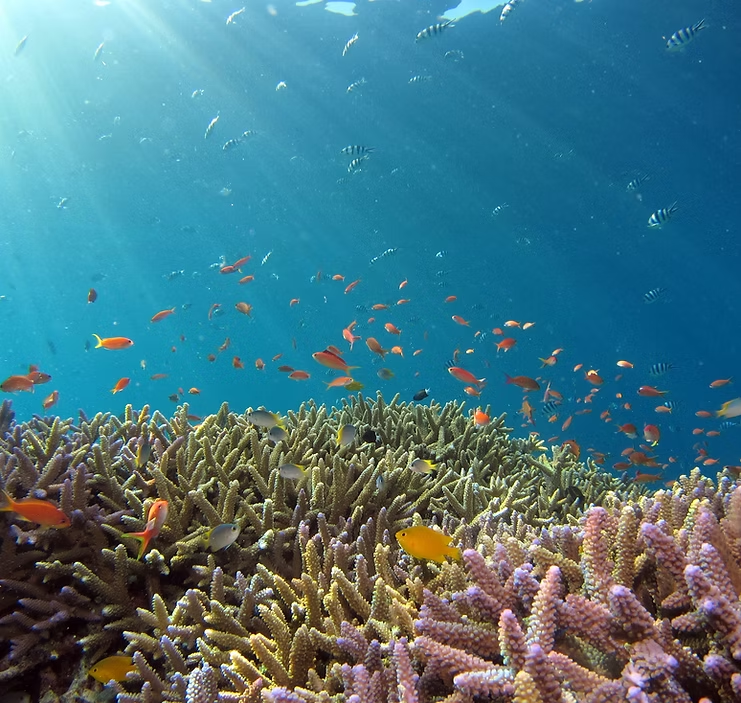
Great Barrier Reef
Explore Great Barrier Reef
Great Barrier Reef
Great Barrier Reef: The World's Largest Coral Wonderland
The Great Barrier Reef is the largest coral reef system on Earth, stretching over 1,400 miles (2,300 km) along Australia’s northeast coast. This UNESCO World Heritage site is home to over 1,500 species of fish, 600 types of coral, and diverse marine life including turtles, sharks, and manta rays. Whether you’re diving, snorkeling, or exploring by boat, the Great Barrier Reef offers an unforgettable underwater adventure like no other.
Learn More
Frequently Asked Questions: Great Barrier Reef
The Great Barrier Reef is a year-round destination, but different seasons offer unique experiences:
- June to October (Dry Season): Best conditions for diving and snorkeling, less humidity, and excellent visibility.
- November to May (Wet Season): Warmer waters, coral spawning events, and the chance to see baby marine life.
- December to March: Stinger season (jellyfish are more common), but protective suits are provided for swimming.
- Heart Reef – A stunning, naturally formed heart-shaped coral formation, best seen from the air.
- Whitsunday Islands – A group of 74 tropical islands, including the famous Whitehaven Beach.
- Green Island – A small coral cay with rainforest walking trails and marine life.
- Heron Island – A paradise for snorkeling and marine turtle nesting.
- Ribbon Reefs – One of the best spots for diving with sharks, manta rays, and vibrant coral.
- Cod Hole (Northern Reef) – Famous for close encounters with giant potato cod fish.
- Agincourt Reef – A spectacular outer reef site with crystal-clear waters and abundant marine biodiversity.
- Lady Elliot Island – The best place to swim with manta rays and reef sharks.
- Cairns & Port Douglas – The main gateway cities for Great Barrier Reef tours and cruises.
- Moreton Bay Bugs – A delicious, local seafood delicacy (similar to lobster).
- Barramundi – A popular Australian fish, often grilled or fried.
- Prawns & Oysters – Fresh, locally caught seafood, best enjoyed in coastal towns.
- Tropical Fruits – Try mangoes, pineapples, and passionfruit from Queensland.
- Australian Meat Pies – A classic Aussie snack, often found in bakeries and cafes.
- Tim Tams & Lamingtons – Traditional Australian sweet treats.
- Boat Tours & Catamarans: The most popular way to explore the reef, departing from Cairns, Port Douglas, and Airlie Beach.
- Scenic Flights & Helicopter Tours: For breathtaking aerial views of Heart Reef and the Whitsundays.
- Liveaboard Dive Trips: Multi-day excursions for diving at remote reef locations.
- Glass-Bottom Boats & Semi-Submersibles: Great for non-swimmers to experience the reef.
- Seaplanes & Water Taxis: Available for transfers to island resorts and secluded beaches.
- Visa-free entry for up to 90 days for travelers from the U.S., Canada, U.K., EU, and other eligible countries.
- Electronic Travel Authority (ETA) required for most visitors—apply online at homeaffairs.gov.au.
- Your passport must be valid for at least six months beyond your arrival date.
- The local currency is the Australian Dollar (AUD).
- ATMs are widely available in all major cities and tourist hubs.
- Credit cards are widely accepted, but cash is useful for small businesses and island vendors.
- Currency exchange offices are available at airports, banks, and in major tourist towns.
- English is the official language.
- No translator is needed, as most tour operators and locals speak English.
- Learning some Aussie slang (like “G’day” for hello) can enhance your experience!
- Respect marine life—avoid touching corals or disturbing sea creatures.
- Use reef-safe sunscreen to protect the environment.
- Follow diving and snorkeling guidelines to ensure safety and conservation.
- Tipping is not expected in Australia but is appreciated for exceptional service.
- Restaurants & Cafés: No tipping required, but 10% is appreciated for excellent service.
- Tour Guides & Boat Crews: $5–$10 AUD per person is a nice gesture.
- Taxi Drivers & Hotel Staff: Rounding up the fare or small tips for luggage assistance is common.
- For peak season (June–October): Book 3–6 months in advance for the best tours and accommodations.
- For shoulder season (March–May, November): Booking 1–2 months ahead is usually sufficient.
- For liveaboard dive trips and island resorts: Book 6–12 months in advance due to limited availability.
- COVID-19 restrictions have been lifted, but always check for updates before traveling.
- Marine Park Permits are included in most tours but check with your operator.
- Drones require a permit when flying near protected reef areas.
- Jellyfish season (November–May) means stinger suits may be required for swimming.
Contact us at 281-229-0862 or admin@pointmetoparadise.com
